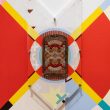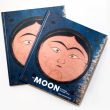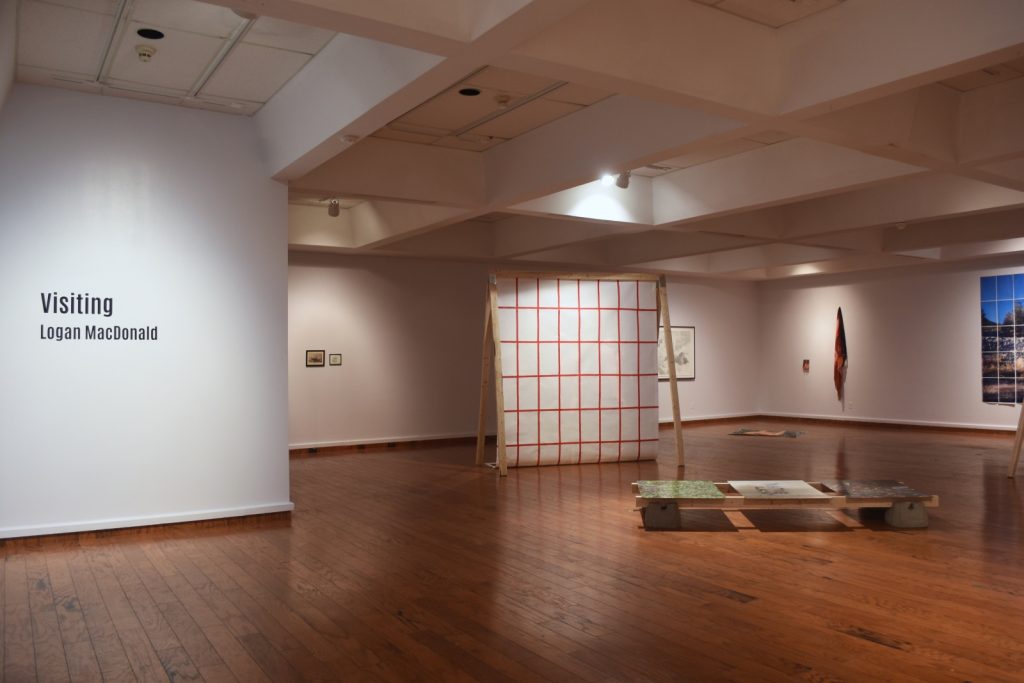
For Logan MacDonald, collaboration is a practice, a form of kinning and a “way of navigating the communities [he] participates in.” Most importantly, collaboration is braided into the fundamentals of “everything [he] does.”
As MacDonald’s own identity resides in multiple communities, and constantly engages with a myriad of voices, histories, temporalities
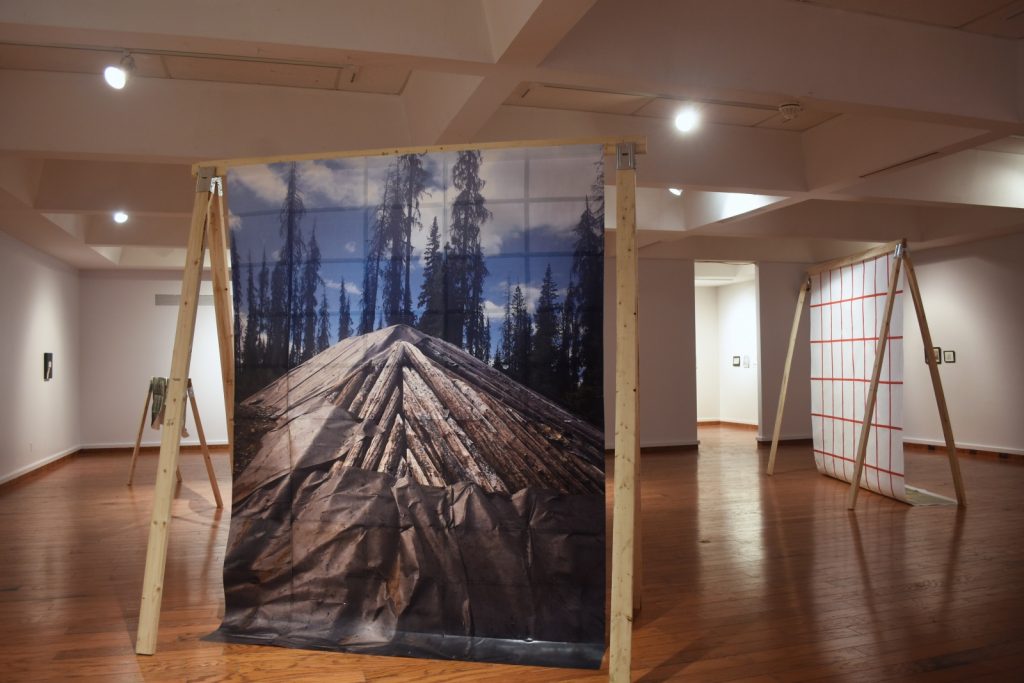
Installation detail from Visiting at Grenfell Art Gallery. Photo: Emily Critch.
His work entangles the personal and political as projects take on histories of homophobia, rural isolation, cultural erasure, loss and mourning. From his work in queer art trio The Third Leg (notably the project Welcome to Gayside), to more nuanced embodiments of reciprocity in his most recent exhibition Visiting, MacDonald uses collaboration to create a dialectic that is active, curious and always refusing closure.
As a practice, MacDonald mixes mediums and disciplines with precision and intention. Lyrical, at times witty, and always pointed, MacDonald uses photography, textiles, oil painting, graphite drawings, installation, and signage to mediate viewership, confront the limits of access, and represent the myriad identities that reverberate through the works. MacDonald’s most recent exhibition Visiting, is an extended iteration of The Lay of the Land (2017), which opened at Eastern Edge in St. John’s and has since visited Winnipeg’s Ace Art. The Lay of the Land was the result of MacDonald’s travels through Indigenous communities, histories and activisms across the country. MacDonald recreates makeshift structures – heavy beams of lumber bolted together – used by Indigenous activists in British Columbia as a means of claiming property against colonial and industrial incursion. Photographs of graffitied sidewalks scream “NATIVE LAND” in black spray paint. Neon repeats throughout the show, confronting encroachment, demarcation, and consumption.
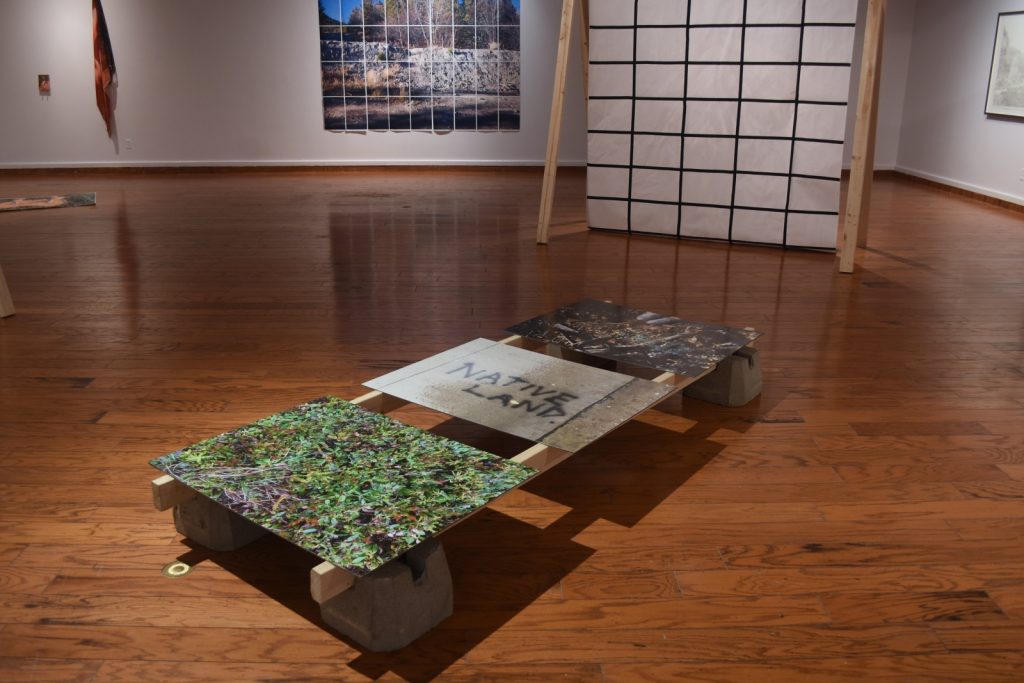
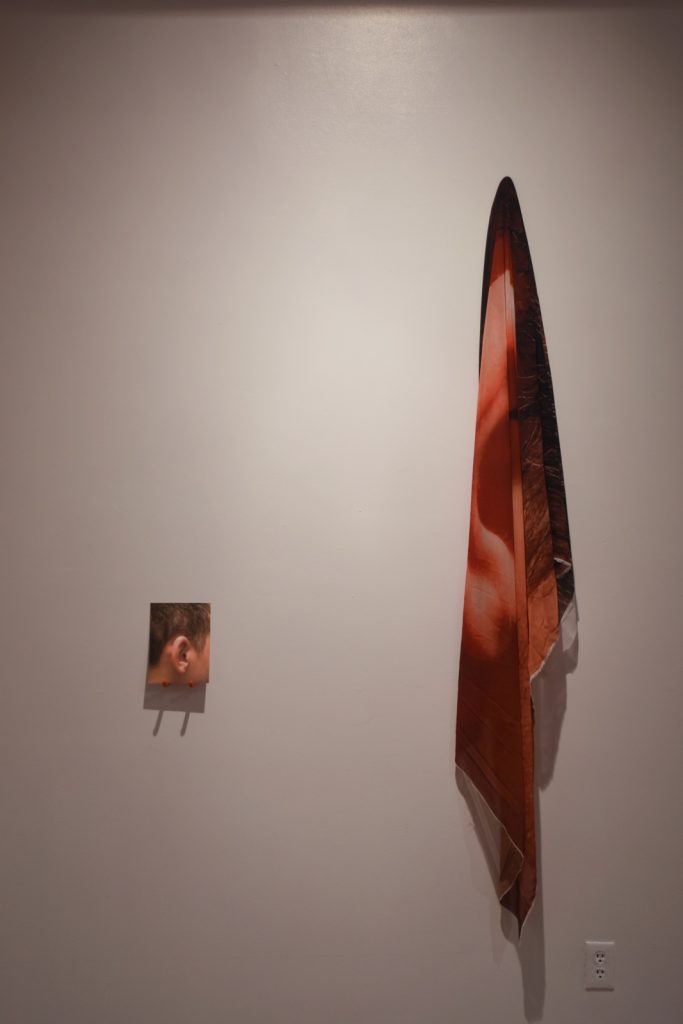
You won’t find photographs of faces in Visiting. MacDonald intentionally mediates third party viewership of his subjects in order to protect the intimacy of his encounters. Instead of presenting photographs, MacDonald draws the image, interjecting the melancholic mechanics of graphite sketching between the viewer and the original experience. By denying access to the primary image, curator Emily Critch says that MacDonald generates tension in the work and refuses to “author” someone else’s narrative. As a means of honouring the intimacy of shared encounters, this is a means of negotiating consent, a form of reciprocity and respect for our kin, both an invitation and a refusal.
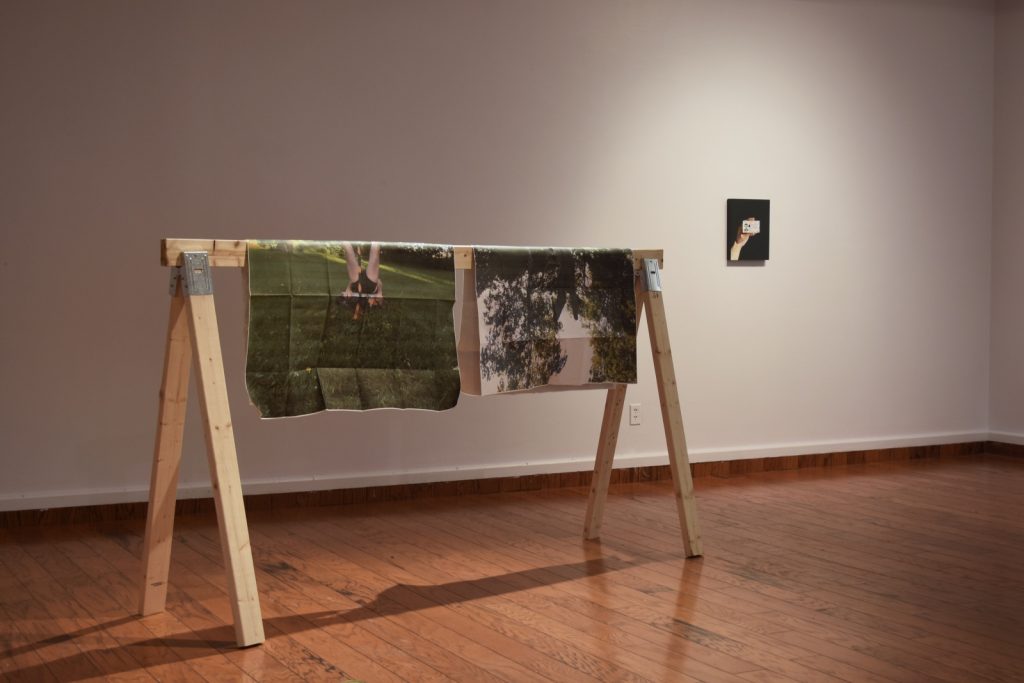
Installation detail from Visiting at Grenfell Art Gallery. Photo: Emily Critch.
Similarly, a small but striking oil painting of a hand holding MacDonald’s status card confronts us with the political surveillance of Indigenous identity. We are asked to reckon with authenticity, generational loss, and the possibility of reclamation. For those of us who will never have a status card, who feel the simultaneous sting of rejection and anger of relentless erasure, this work also speaks to the impossibilities of desire.
MacDonald resurrects archival ghosts, entangling past and future, grief and hope, loss and desire. Here,
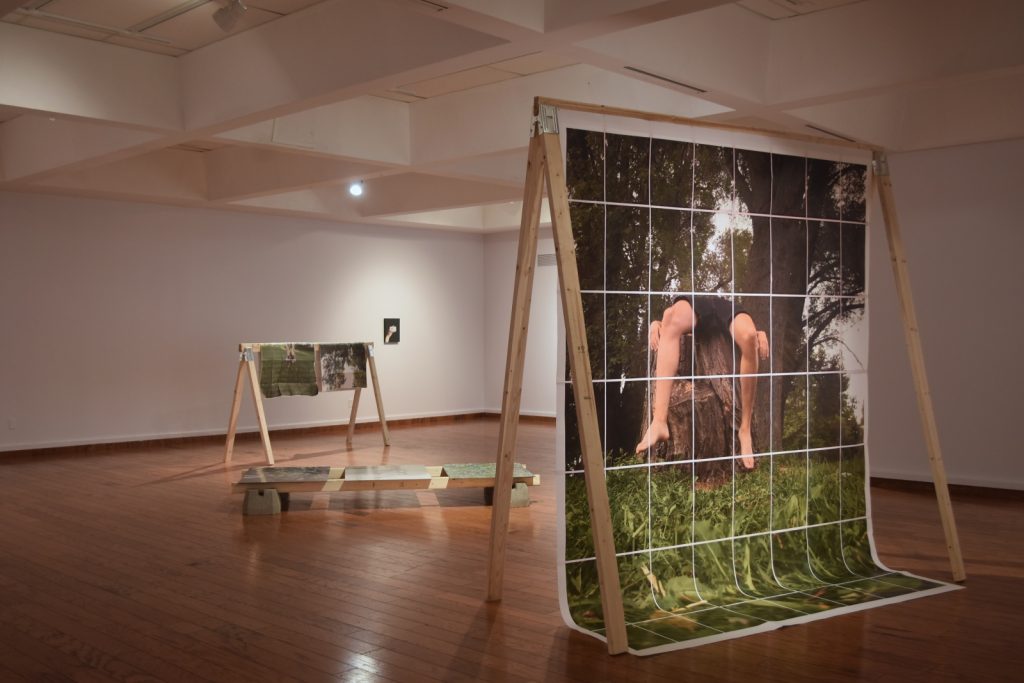
Installation detail from Visiting at Grenfell Art Gallery. Photo: Emily Critch
A focal point of Visiting is a large-scale photograph of the artist’s limp body, facing upward, sprawled across a large tree stump. MacDonald notes that the surveillance of trees acts as an analogy for the surveillance of queer and Indigenous bodies in public spaces. MacDonald tells me that “this work is sad. It is about contemporary mourning and historical mourning, but it is also a call to action and to empathy.” In these
[2] Tuck, Eve and Karyn Recollet. (2017) “Visitations (You Are Not Alone) in #callresponse. Vancouver: grunt gallery. www.evetuck.com/s/Visitations-You-are-not-alone-2017-Tuck-Recollet.pdf

